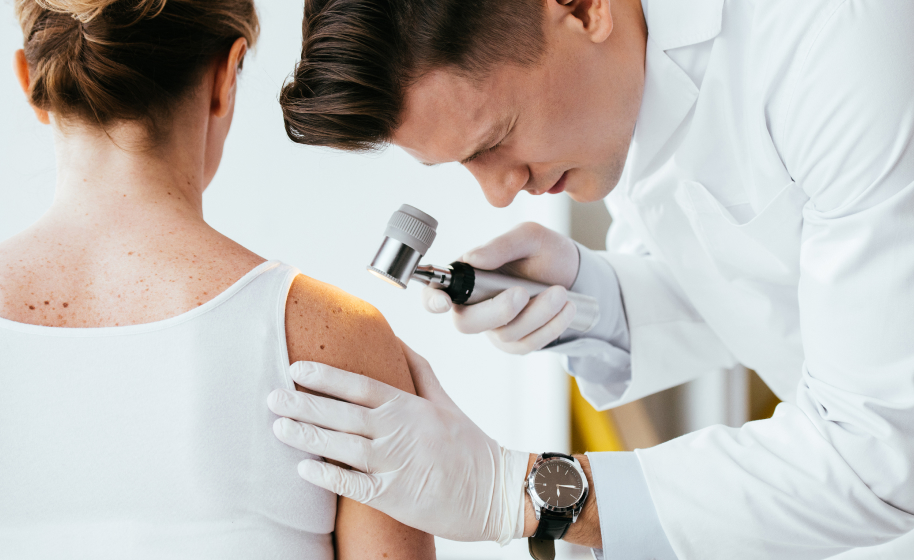Browsing Skin Cancer Cells Treatment: The Important Role of Mohs in Modern Dermatology Practices
Skin cancer cells, a daunting diagnosis, usually leaves people coming to grips with various treatment alternatives. Amongst these, Mohs surgery stands as a sign in contemporary dermatology, renowned for its meticulous method to cancer elimination and preservation of bordering healthy and balanced tissue. This cutting-edge method assures not only superior cosmetic end results but likewise uses prompt outcomes, reducing patient anxiety. As we check out the complexities of this treatment, one will certainly value its critical duty in skin cancer cells treatment.
Recognizing Skin Cancer Cells: Types and Dangers
There are three main types of skin cancer cells: Basal cell carcinoma, Squamous cell cancer, and Cancer malignancy. It accounts for just regarding 1% of skin cancer cases however triggers the huge bulk of skin cancer cells fatalities. Risk factors include reasonable skin, background of sunburn, extreme sun exposure, living at high altitudes or shut to the equator, having lots of moles, a household history of skin cancer, and weakened immune system.
What Is Mohs Surgical treatment and Exactly How It's Transforming Skin Cancer Therapy
Despite the countless therapies currently readily available for skin cancer, Mohs surgical procedure sticks out as a groundbreaking and highly reliable service. Called after Frederic E. Mohs, the doctor that developed the treatment, Mohs surgery is a specific surgical strategy used to deal with skin cancer. During the treatment, thin layers of cancer-containing skin are gradually removed and checked out up until just cancer-free tissue stays. This strategy enables the doctor to validate that all cancer cells have been removed at the time of surgical treatment. This degree of accuracy, combined with the ability to spare as much healthy cells as possible, is revolutionizing skin cancer cells therapy. Therefore, Mohs surgical treatment has become a cornerstone of modern dermatology methods.
The Benefits of Mohs Surgical Procedure Over Traditional Skin Cancer Cells Therapies
Structure on the cutting-edge nature of Mohs surgical procedure, it's essential to consider its various advantages over traditional skin cancer cells therapies. Unlike guidelines, Mohs provides a higher treatment price, commonly reaching 99% for novice treatments and 94% for recurrent cancers cells. This accuracy is because of its recommended you read unique approach of considerably eliminating and analyzing tissue layers till just cancer-free cells stay (hair loss). Additionally, it decreases damage to healthy skin, bring about less scarring and improved aesthetic outcomes. Mohs additionally supplies immediate outcomes, getting rid of the anxiety-ridden wait usual with other approaches. It's affordable, as the surgical procedure and browse this site microscopic exam occur concurrently, getting rid of the need for extra laboratory solutions. Thus, Mohs stands for a significant improvement in dermatological techniques.
The Treatment of Mohs Surgical Procedure: What to Expect Throughout the Refine

Potential Side Results and Post-Operative Care of Mohs Surgical Treatment
Undergoing Mohs surgical treatment, like any kind of other operation, involves prospective side results that patients must know. Common negative effects consist of discomfort, bruising, and swelling at the surgical treatment website. However, these are typically short-lived and convenient with over-the-counter pain medicine and cold pack. In rare cases, clients might experience infection, blood loss, or an allergy to the anesthetic. Post-operative care is essential to healing and lessening negative effects. This typically involves keeping the wound clean and dry, taking proposed medicines, and preventing arduous tasks. Patients should also attend all follow-up appointments for wound care and monitoring. In some cases, additional treatments might be essential to make certain full elimination of the malignant cells. Sticking to these post-operative care guidelines can significantly enhance recovery and outcomes.
Conclusion
